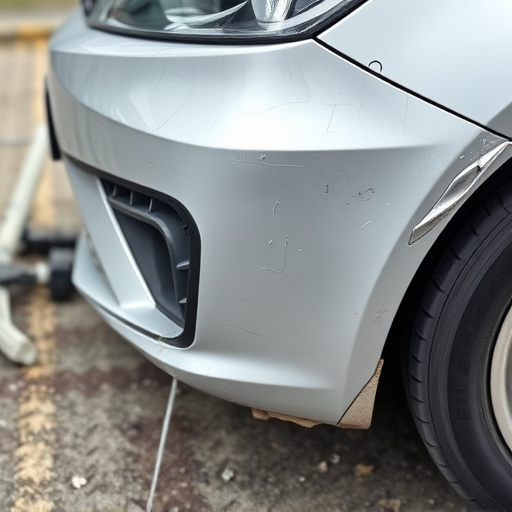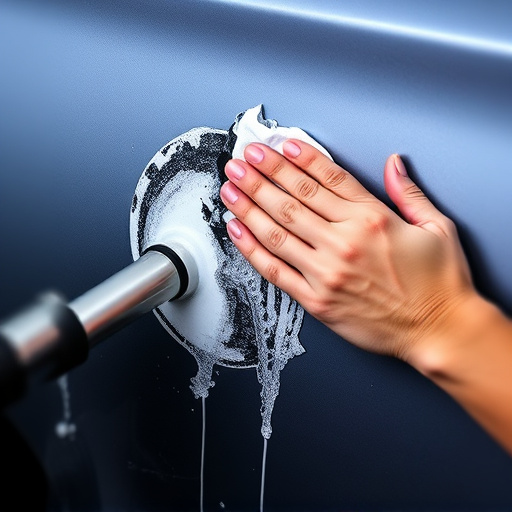Efficient repair scheduling collision is key to minimizing vehicle downtime and boosting customer satisfaction. By strategically integrating services like tire and car body restoration, prioritizing repairs based on severity, and utilizing digital systems for management and tracking, collision centers can significantly reduce wait times. This holistic approach, enabled by technology, ensures high-quality outcomes, faster turnaround times, and enhanced client experience.
In today’s competitive automotive industry, efficient collision repair scheduling is paramount to keeping vehicles on the road and customers satisfied. Understanding the significant impact of downtime on both businesses and drivers, this article delves into strategies that streamline repair processes. We explore how strategic planning, coupled with innovative technology, can minimize disruption. By implementing data-driven approaches, shops can optimize labor allocation, reduce wait times, and ultimately enhance customer experience.
- Understanding the Impact of Collision Repair Scheduling
- Strategies for Efficient Repair Scheduling to Minimize Downtime
- Technology's Role in Optimizing Collision Repair Processes
Understanding the Impact of Collision Repair Scheduling

Efficient repair scheduling collision is a critical aspect of minimizing vehicle downtime for car owners. When a collision occurs, prompt and well-coordinated action can significantly reduce the time a vehicle spends in the workshop. Understanding the impact of scheduling requires recognizing that every hour counts when it comes to getting your vehicle back on the road. Delays in repair can lead to further complications, increased costs, and inconvenience for the owner.
A strategic approach to collision repair scheduling involves integrating various services such as tire services and car body restoration within a seamless process. A well-organized collision center should be able to handle all repairs under one roof, ensuring that parts are readily available and technicians are specialized in their respective areas. This not only streamlines the repair process but also guarantees high-quality outcomes, thereby minimizing customer wait times and enhancing overall satisfaction.
Strategies for Efficient Repair Scheduling to Minimize Downtime

Efficient repair scheduling is a key strategy to minimize downtime for vehicles involved in collisions. The first step involves assessing the damage and prioritizing repairs based on severity and impact on safety. This allows for a structured plan, ensuring critical components are addressed first. A well-organized workshop with streamlined processes can significantly reduce wait times. Implementing digital systems for scheduling, parts management, and tracking progress enables real-time updates and better resource allocation.
Additionally, offering a range of services like car paint repairs and tire services under one roof facilitates quicker turnarounds. Coordinated efforts between different departments or specialized technicians for specific tasks can further optimize the process. By adopting these strategies, collision repair centers can efficiently manage repair scheduling, get vehicles back on the road faster, and enhance customer satisfaction.
Technology's Role in Optimizing Collision Repair Processes

The integration of technology into collision repair processes has revolutionized the way auto body services are delivered, minimizing downtime for vehicle owners. Advanced systems and software applications now play a pivotal role in optimizing repair scheduling collision scenarios. These technologies enable efficient communication between insurance providers, repair shops, and policyholders, ensuring seamless coordination throughout the entire process.
With real-time data sharing, artificial intelligence algorithms can predict part availability and labor costs, facilitating faster decision-making. This streamlines auto repair services, allowing for more accurate estimates and reduced turnaround times. Furthermore, digital platforms offer customers transparency, enabling them to track their vehicle’s progress, including tasks like auto body painting, and make informed choices regarding repairs.
Optimizing repair scheduling for collision damage is key to minimizing vehicle downtime and maximizing customer satisfaction. By understanding the impact of scheduling choices, implementing efficient strategies, and leveraging technology like computerized estimating systems and shop management software, collision centers can streamline their processes, reduce wait times, and ultimately provide faster turnarounds without compromising quality. This approach not only benefits businesses but also enhances the overall driving experience for vehicle owners.














